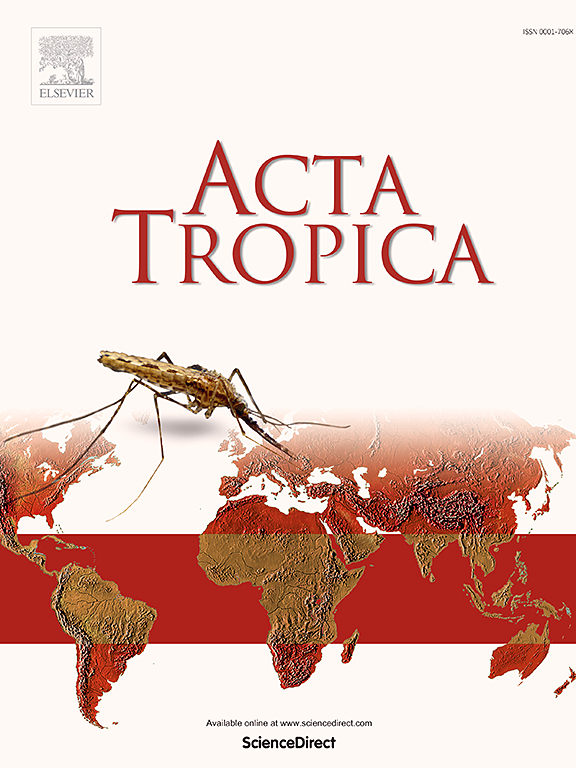蠓类微生物群落结构及多样性比较
IF 2.1
3区 医学
Q2 PARASITOLOGY
引用次数: 0
摘要
库蠓(双翅目:蠓科)在全球有1400多种,是几种人类和兽医病原体的媒介。昆虫媒介的微生物群在宿主和病原体之间的相互作用中起着至关重要的作用,并且可以影响昆虫传播病原体或寄生虫的能力。确定库蠓的微生物组组成可以为控制蠓种群和影响疾病传播提供新的方法。本研究对五种库蠓的细菌和真菌微生物群进行了表征和比较。利用16S和ITS扩增子测序,我们鉴定了不同的细菌群落,其中变形菌门是最丰富的门。值得注意的是,立克次体、midchloria和Asaia是所有样本的优势属。真菌分析显示子囊菌门是主要分类单元,枝孢子门是最常见的属。不同种间细菌和真菌多样性差异不大,这表明5种库蠓的微生物群有一些共同的成员,但总体组成不同。我们的研究结果强调了利用蠓相关微生物群开发针对库蠓种群及其传播的病原体的新型生物防治策略的潜力。本文章由计算机程序翻译,如有差异,请以英文原文为准。

A comparison of the structure and diversity of the microbial communities of Culicoides midges
Culicoides midges (Diptera: Ceratopogonidae) comprise over 1400 species globally and are vectors for several human and veterinary pathogens. The microbiota of insect vectors plays an essential role in the interactions between the host and pathogen and can impact the ability of the insect to transmit pathogens or parasites. Characterizing the microbiome composition of Culicoides could yield novel approaches to control midge populations and impact disease transmission. This study characterized and compared the bacterial and fungal microbiota of five Culicoides species. Utilizing 16S and ITS amplicon sequencing, we identified diverse bacterial communities, with Proteobacteria as the most abundant phylum. Notably, Rickettsia, Midichloria, and Asaia were the predominant genera across samples. Fungal analysis revealed Ascomycota as the primary taxon, with Cladosporium being the most prevalent genus. Little difference in overall bacterial and fungal diversity was observed between species, suggesting that the five Culicoides species examined share some common members of their microbiota but differ in overall composition. Our findings highlight the potential of exploiting midge-associated microbiota for developing novel biological control strategies to target Culicoides species populations and the pathogens they transmit.
求助全文
通过发布文献求助,成功后即可免费获取论文全文。
去求助
来源期刊

Acta tropica
医学-寄生虫学
CiteScore
5.40
自引率
11.10%
发文量
383
审稿时长
37 days
期刊介绍:
Acta Tropica, is an international journal on infectious diseases that covers public health sciences and biomedical research with particular emphasis on topics relevant to human and animal health in the tropics and the subtropics.
 求助内容:
求助内容: 应助结果提醒方式:
应助结果提醒方式:


